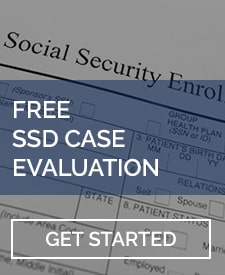If you have found yourself in a position where you are unable to work, you may be considering applying for South Florida Social Security Disability Benefits. The Social Security Disability program is a federally mandated insurance program administered by the U.S. government. You may not know this, but you have been paying into this program when you file your taxes on your earned income. In doing so, you are essentially paying a “premium” into this federal disability insurance program. But when you need them, how do you maximize your disability benefits?
There are two ways to financially maximize your disability benefits:
- The first is based on the amount you would receive for the monthly benefit. The amount you would receive in monthly benefits is called your primary insurance amount. Your PIA amount is directly related to your earned wages and what you have paid taxes on. The average PIA for an individual on disability benefits is $1,400 per month. There is a cap to the amount of a PIA, that being $2,861. For an individual to receive that amount they would need to pay taxes on wages of at least $128,400. If they pay taxes on a higher wage then the PIA amount would still be capped at $2,861. So, to receive the highest PIA possible you need to make sure to be paying taxes on all of your working income. If you only pay taxes on half of your earned income then your PIA amount will only represent half of the income. This comes into play for people who have an agreement with their employer to pay them half on the books and the rest in cash. That type of arrangement may benefit the employer and you in the short term. But in the long term, you are not paying taxes on those wages and thus not increasing your PIA amount.
- The second way to maximize your disability benefits is by choosing the correct disability date, or alleged onset date. An individual’s alleged onset date is determined not only by the date you were diagnosed with certain medical conditions but also by the date you stopped working. In most cases, the two dates are roughly the same. However, some people have vastly different dates for the date they last worked or their medical diagnosis. For example, if you suffer from arthritis you know that condition is a progressive disease. Say you were initially diagnosed with arthritis in 2010. But it wasn’t until January 2017 that arthritis became so bad that you had to stop working. In this instance, you would allege your disability date to be January 1, 2017, the date you last worked due to your medical conditions. Another example would be an individual who worked for several years, then decided in 2013 to stop working so they could stay home to take care of an elderly parent. This individual was then involved in a very severe car accident in October 2017, suffering multiple fractures, along with becoming a paraplegic. Even though this individual stopped working in 2013, they were not prevented from working until the date of their car accident in October 2017. Thus, the alleged onset date in this situation would be October 2017. Then there is also the situation where the individual was diagnosed with a progressive condition in 2012 but only reduced their working hours to part-time in 2014 due to the severity of their condition. The individual then ultimately stopped working in 2016. In this situation, you would look to see what the earned wage was from the part-time work. If the earned wage was less than what SSA terms substantial gainful activity, you would want to use the date the part-time work started as the alleged onset date.
Determining your alleged onset date is not an easy task. It certainly requires an in-depth knowledge of the system, typically provided by an experienced disability attorney. If you want to maximize the disability benefits you would receive, it is advisable to seek counsel from an attorney. If you simply rely upon what social security tells you they may not be looking to maximize your benefits, simply to get through your application so they can move on to the next one. Having an attorney on your side helps solidify you are getting back everything that you have put into the system.
Hire an Experienced Disability Attorney
If maximizing your benefits is not reason enough to hire an attorney, the application process itself should indicate an experienced attorney is needed to fight for your benefits. When applying for disability benefits, you will need to prove you meet Social Security’s definition of disability. Social Security defines disability as the inability to perform the substantial gainful activity due to a severe physical and or mental condition affecting your ability to work for a period of 12 months or expected to last for 12 months or result in death.

To apply for this program, you would need to complete an online application. Or, you may call the National Social Security Hotline or go into your local office to complete the application. While you do not need legal representation to file for these benefits, it is highly recommended as there are numerous regulations involved in making a disability determination. You may think it is obvious that you are unable to work, however, SSA needs to follow very strict guidelines in determining if an individual is disabled.
SSA will first consider whether you are engaging in substantial gainful activity. All this means is that SSA will evaluate if you are currently working. If you are working and earning over SGA then you will be automatically disqualified. The second consideration is whether you suffer from a severe physical and/or mental impairment that affects your ability to work. This threshold is quite low. The third consideration is whether you meet one of Social Security’s Listed impairments. SSA has a list of medical conditions in which they have deemed to be so severe that if proven you will automatically be found disabled. Most people are not found disabled based upon a listing. If you are not, the next step would be whether your conditions prevent you from performing your past work, and then whether those same conditions preclude all other types of work. If you are found to not be able to perform past work or any work then SSA will find you disabled.
Maximizing your disability benefits and navigating through the application process is not an easy one. At the LaBovick Law Group, we provide free consultations for all of our clients. This way, we can help determine the best path to take in your case and answer any questions you may have. Give us a call today at (561) 623-3681.




